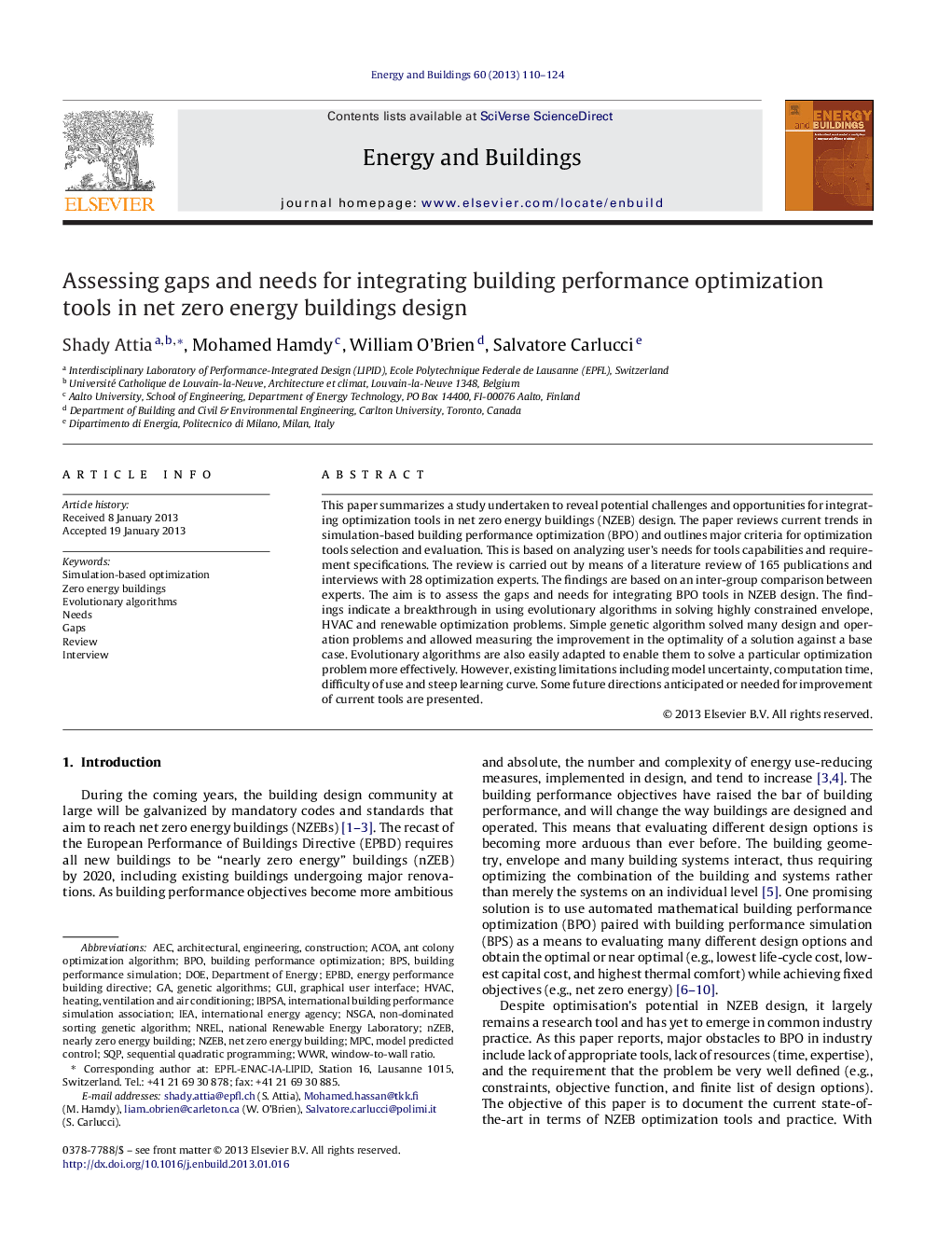| Article ID | Journal | Published Year | Pages | File Type |
|---|---|---|---|---|
| 263340 | Energy and Buildings | 2013 | 15 Pages |
This paper summarizes a study undertaken to reveal potential challenges and opportunities for integrating optimization tools in net zero energy buildings (NZEB) design. The paper reviews current trends in simulation-based building performance optimization (BPO) and outlines major criteria for optimization tools selection and evaluation. This is based on analyzing user's needs for tools capabilities and requirement specifications. The review is carried out by means of a literature review of 165 publications and interviews with 28 optimization experts. The findings are based on an inter-group comparison between experts. The aim is to assess the gaps and needs for integrating BPO tools in NZEB design. The findings indicate a breakthrough in using evolutionary algorithms in solving highly constrained envelope, HVAC and renewable optimization problems. Simple genetic algorithm solved many design and operation problems and allowed measuring the improvement in the optimality of a solution against a base case. Evolutionary algorithms are also easily adapted to enable them to solve a particular optimization problem more effectively. However, existing limitations including model uncertainty, computation time, difficulty of use and steep learning curve. Some future directions anticipated or needed for improvement of current tools are presented.
► Evolutionary algorithms are a breakthrough for solving constrained building design problems. ► Time, knowledge, lack of tools, and uncertainty inhibit the uptake of BPO. ► Simulation models inputs causing significant restrain in the AEC industry take up. ► Interviewees’ agreed that BPO enables them to solve building design problems effectively. ► Some significant ideas on future feature of optimization tools are presented.
